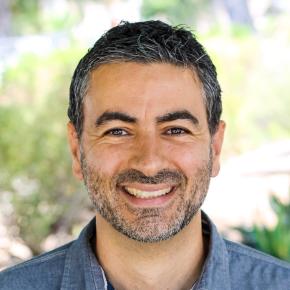Alan’s monthly letter for January 2015
Please note: Stand to Reason does not condone violence to end the harm of abortion and does not knowingly associate with those who do.
On May 1, 2009, Scott Roeder walked into Reformation Lutheran Church, pulled out a gun, and shot George Tiller in the head at point blank range. Tiller used to perform late-term abortions. Every pro-life leader and organization I know condemned the killing of Tiller.
Some abortion-choice advocates, however, think we’re inconsistent. They think that if pro-lifers truly believed the unborn was a human being, we would condone Tiller’s murder. After all, the analogy goes, if a madman attempts to kill a toddler at a park, it’s permissible to protect the child even if lethal force is necessary. In the same way, killing an abortionist before he performs an abortion protects a child whose life is in danger.
Pro-lifers, however, almost unanimously oppose violence to stop abortion. Some abortion-choice advocates believe this betrays their true beliefs. They argue that either pro-lifers are being inconsistent or they don’t actually believe the unborn is a human being.
It turns out, though, that killing an abortion doctor is not parallel in relevant ways to killing a madman who attempts to murder a toddler. There are at least three important differences with this analogy worth highlighting.
First, killing an abortion doctor probably wouldn’t save the lives of unborn children. If you stop the madman in a park, you would save the life of the toddler. That’s because it’s highly unlikely that another madman would take up the hunt to kill the very same toddler. Killing an abortion doctor, however, would not save the life of a child whose mother is abortion-minded. The pregnant woman could still procure an abortion by seeking any number of qualified physicians. The child will still die no matter what happens to a single abortionist.
In fact, killing an abortionist would simply result in more lives lost. Not only would unborn children still die, but now the doctor is dead and the life of the person who killed the abortionist is also in jeopardy. This is hardly a pro-life act.
This raises a second dissimilarity. It might not be possible to reason a madman out of killing a toddler in the park, short of killing him. This is not true, however, of an abortion doctor. All it takes to stop a physician from performing an abortion is the verbal request of the mother.
The lesson is clear. We need to change women’s minds. That can be done by persuading them that their unborn are valuable human beings and by meeting the needs of women facing crisis pregnancies. No violence is needed.
A third difference in the analogy is the legality of the act. It’s not illegal to use lethal force against a madman who attempts to kill a toddler. It is illegal to use lethal force against an abortionist. To be clear, I’m not saying that what is legal is moral, nor am I suggesting that civil disobedience is never warranted. I’m simply pointing out a key difference—the legality of the act involved—that needs to be factored into the equation.
With that in mind, killing an abortionist takes the law into one’s own hands by committing an evil. As my colleague, Greg Koukl, writes:
[This] vigilante tactic serves to unravel the fabric of the social contract when the official rule of law, which, though imperfect, is still a productive force for the common good in the land. Rule of law in this country has not broken down as it did in Nazi Germany. It’s still in effect. It’s still accomplishing good. It’s still mitigating the impact of evil in the world. The minute we take a shot at the rule of law by taking the law into our own hands in this way we pull the leg out of one of the most important things that holds up our social structure.
Instead of vigilantism, the more effective approach is to work to change minds and culture. If a woman believes that abortion kills her innocent son or daughter and has the support of loving people to help her through her crisis pregnancy, it’s hard to imagine she would still make the wrong choice.
That’s why pro-lifers have a two-pronged approach to saving the lives of unborn children. They try to change minds through the art of pro-life persuasion and serve the needs of abortion-minded women.

